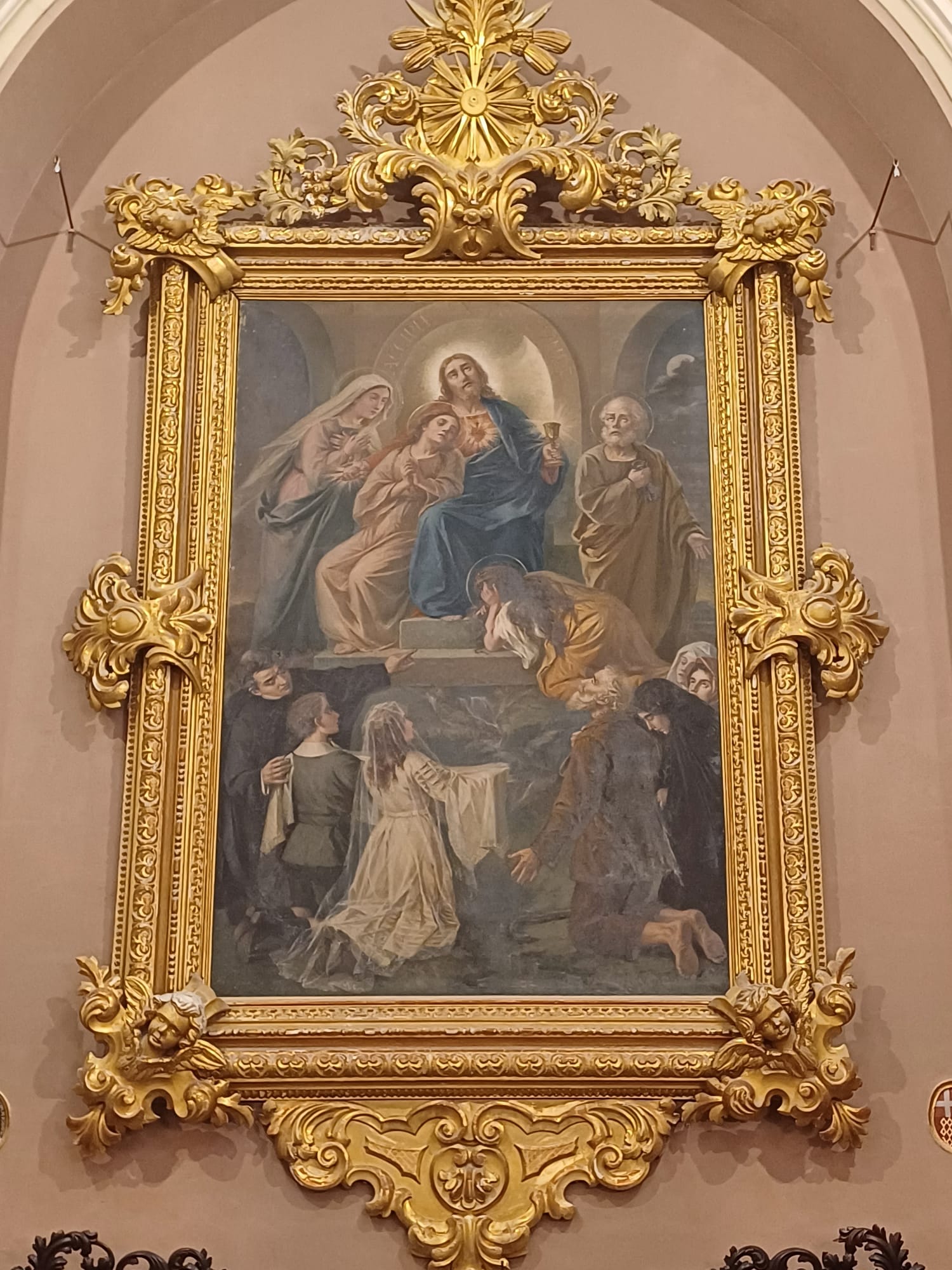
Taking and accepting
The first reflection about the painting of the Sacred Heart of Jesus at St Ubaldesca Church, Paola
And as they were eating, he took bread, and blessed, and broke it, and gave it to them, and said, “Take; this is my body.” And he took a cup, and when he had given thanks he gave it to them, and they all drank of it. And he said to them, “This is my blood of the covenant, which is poured out for many. Truly, I say to you, I shall not drink again of the fruit of the vine until that day when I drink it new in the kingdom of God.”
Mark 14: 22-25
As Easter time gives way to Ordinary time, the Church celebrates three solemnities related to the mystery of God himself and to the mystery of the Incarnation. These are the Solemnity of the Most Holy Trinity, of the Most Holy Body and Blood of Christ and of the Sacred Heart of Jesus. Therefore, as we approach the end of the fifty days of Easter, we have thought of turning our gaze towards a very interesting painting which is to be found at Saint Ubaldesca Church, Paola: the titular painting that represents the Sacred Heart of Jesus.
Originally, this church enjoyed the patronage of the Knights of the Order of St John. It was built in 1630, just four years after Paola was founded by Grandmaster Antoine De Paule, who wanted to dedicate this new church to Saint Ubaldesca Taccini. Saint Ubaldesca was born in Calcinaia, and at age 15 she joined the sisters of the Hospitaller Order of St John who were living in the compound of the Church of the Holy Sepulchre in Pisa. There she dedicated her life to caring for the sick and to charitable works.
Notwithstanding this original dedication—which is still associated with this church to the present day—when Paola was erected a parish in 1910, the parish was dedicated to the Sacred Heart of Jesus. The following year, a new titular painting by artist Lazzaro Pisani (1854-1932) was commissioned for this church reflecting the parish’s dedication.
The painting is dominated by Jesus, his heart exposed and sat high, like on a throne raised on two steps. This throne, resting on a rock looks like being in a niche that forms part of an architectural structure. The words ACCIPITE EX EO OMNES—take this all of you—are inscribed around the edge of the niche, clearly referring to the words of Christ at the Last Supper when he gave to his disciples his flesh to eat and his blood to drink under the species of bread and wine. The same words are spoken by the priest at consecration during every Mass.
But there is a play on the word ‘accipite’ since it can mean ‘taking’ as well as ‘accepting’ (or ‘receving’). So, could it also be a commandment to accept everything from him? Although I do not believe that this was the interpretation in the artist’s mind—especially because it is not the most common use of the verb ‘accipio’—this ambivalence around taking and accepting is a characteristic of the dynamics of Christian life. Although Jesus said to the Twelve “take,” it was he who handed out the bread and the cup, in a similar way that we receive the Eucharist at Mass. Likewise, in everyday life, it is necessary to take and to accept: to take and accept responsibility, to take and accept decisions, to take and accept praise and credit … until the distinction becomes so blurred that the two almost become one; where your will merges with that of the Other such that you are then able to take of what He has to give you and to accept everything from His hands. Has that distinction become blurred enough in your life, or is the conflict between a gift freely given and avarice still on inside of you? Ponder a little….



